Summer 2021
Follow Your Dragon
Recent graduate and set designer Kat Yo ’21 brings her passion for sustainability and Korean folklore—and her dazzling imagination—to UP’s stage.
- Story by Karen Bridges
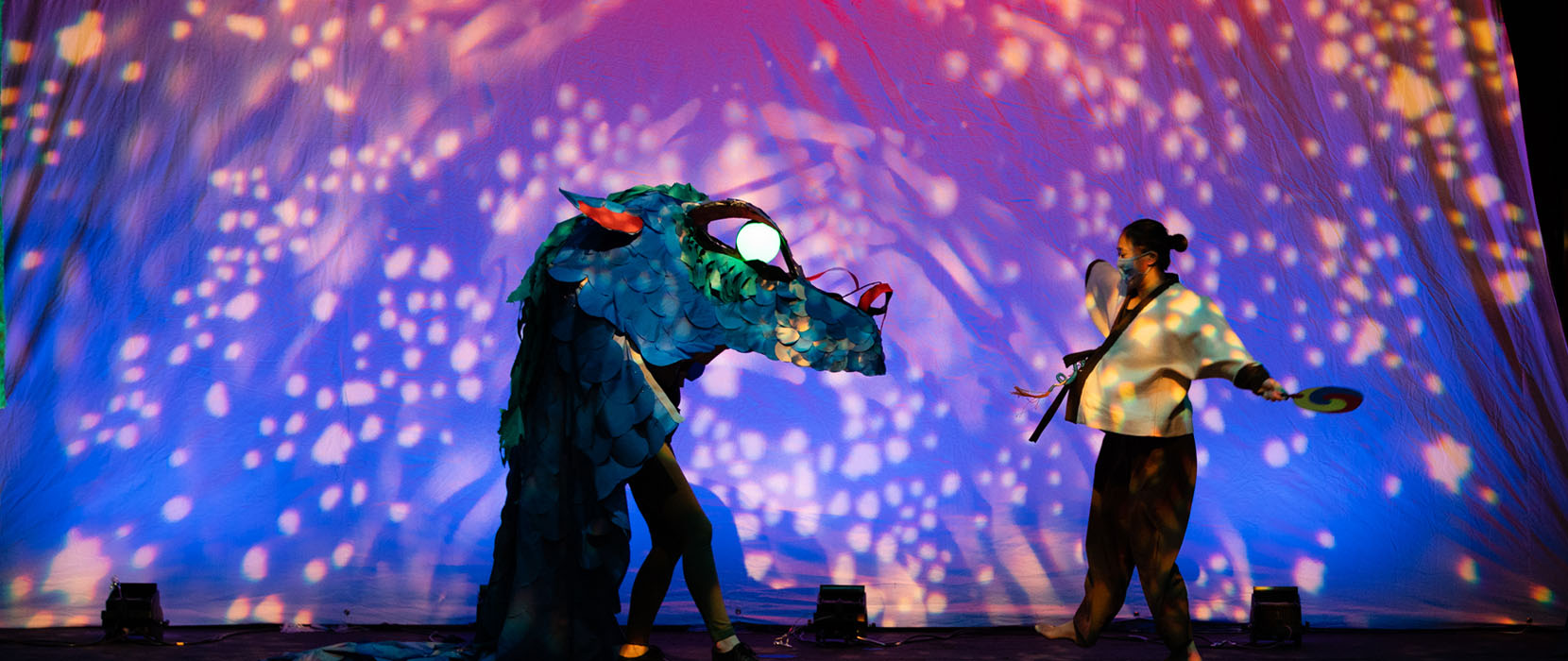
Photos by Adam Guggenheim
FOR MONTHS, KAT YO '21 gathered trash underneath her bed. Empty soda water cans, CVS receipts, an old phone cord, cardboard, the list goes on. You wouldn’t have expected it—when I interviewed Yo over Zoom, her dorm room was tidy and organized; a guitar and a few selected photos and artwork adorned the walls. The trash was lovingly curated for a higher purpose. With an artist’s eye and an environmentalist’s passion, Yo gave these discarded materials a new life as a refrigerator-sized dragon puppet for The Imugi Myth, a retelling of a Korean story for her final production on the University of Portland stage.
You’d never know the imugi was made of recycled materials. The “skeleton” of the dragon is the cardboard from care packages her family sent her, some of them going back to her first year of college. Hundreds of individual scales, circles of vibrant blue, red, purple, and silver fabric are cut from scraps of fabric from UP’s costume shop, meticulously layered from the snout to the horns, and cascading down into a flowing train. Inside the dragon’s head is a sturdy, dense cardboard handle, the center tube of a fabric bolt, which the dancer uses to hold and manipulate the puppet. Insulation made from sponges provides another point of contact and padding for the dancer’s head. The only non-recycled material are the imugi’s LED eyes that light up and change with the emotion of the scene.
A set designer, costume designer, and a storyteller, Yo has a vision for the world she wants to see—both on the stage and off. And that vision involves sustainable use of our world’s environmental resources and stories that connect us, even when—due to COVID—most stages have gone dark.
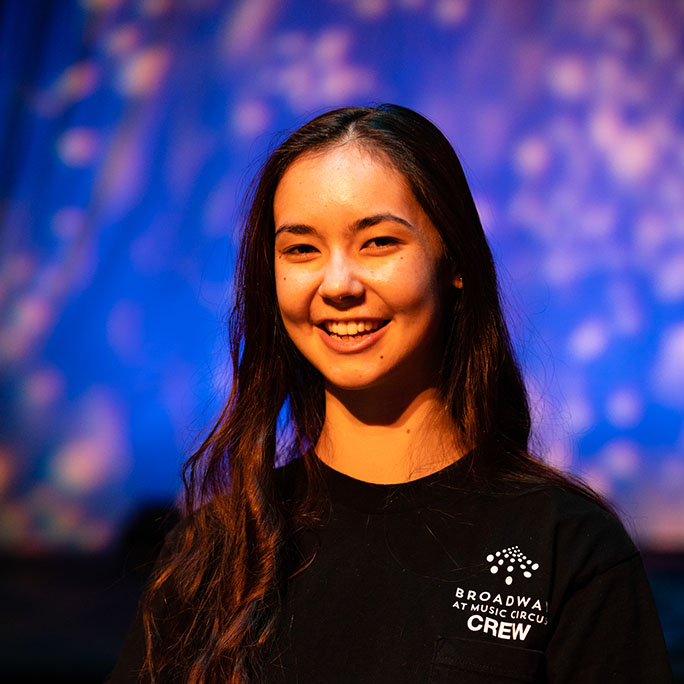
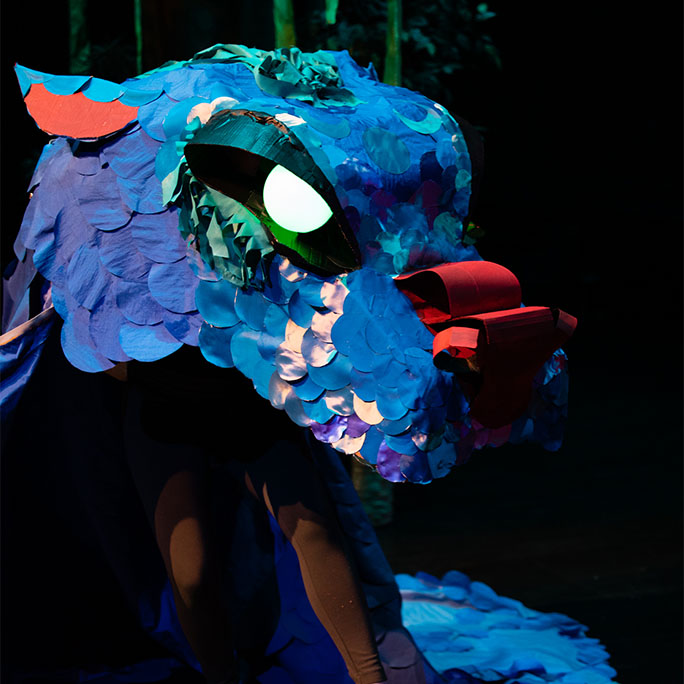
Yo’s passion for sustainability sparked with her theater work during Spring Break 2020, when she participated in the Moreau Center’s first-ever Environmental Justice Immersion. The week culminated in the Columbia River Gorge with a visit to the Celilo Village. Bobby Begay, a beloved Yakima tribal leader and lead fishing technician for the Columbia River Inter-Tribal Fish Commission (CRITFC), hosted the students and spoke of his community’s presence and work in the region to advocate for access to fish and clean water. Begay—renowned in the Gorge community and throughout Oregon as an activist, teacher, and gifted storyteller—advocated for the environment as a deeply enriching component of all human life. “Bobby talked about himself as a voice for the rivers, the fish, the things that can’t speak and need our help,” says Yo.
This was early March 2020, right when the news of COVID-19 was beginning to get real. No one was certain yet how much everything was about to change. Yo recalls tribal members bumping elbows with students instead of shaking hands and expressing great concern for the virus. It was a moment of reckoning with her privilege of health and access to care.
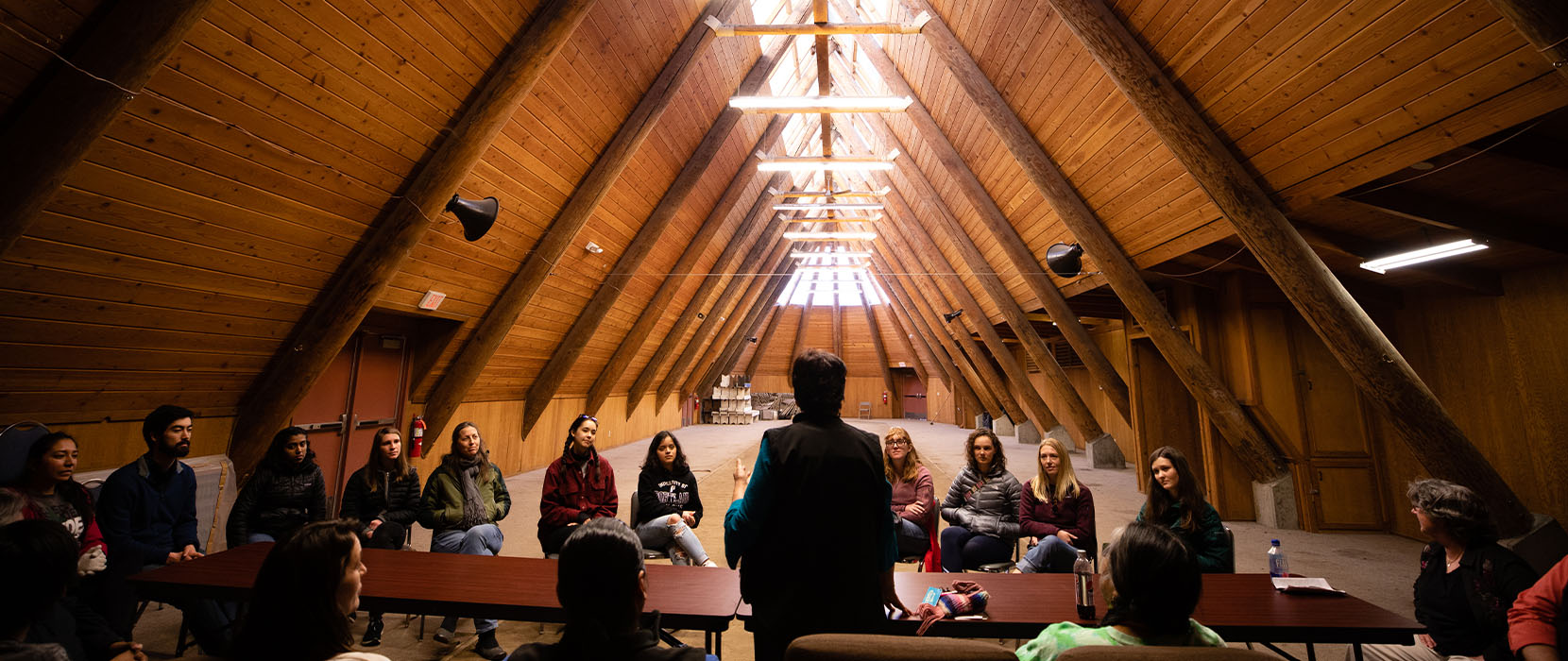
Yo’s revelation and concern for Indigenous American communities were not misplaced. The CDC estimates that the mortality rate for Indigenous Americans is nearly twice that of white populations. Tragically, Bobby Begay died of COVID-19 complications in April 2020. “It hit hard,” says Yo. Begay’s stories, and his loss, raised complicated questions for Yo when she considered her own storytelling on stage—who gets a voice? Whose stories are told? Whose stories and voices are silenced?
The Environmental Justice Immersion was a pivotal experience for Yo, and she returned to her studies inspired. “That immersion allowed me to understand why I’m committing,” she says. “Everyone knows environmental justice matters on a vague timeline, but seeing who it affects and how it affects them—it put a sense of urgency on the topic.” She wanted her work to honor Bobby’s memory.
Yo looked for ways to express the connection between storytelling and the environment, to find a way to inspire others, even as COVID was forcing people into isolation. “Can I show you something?” Yo asked me during our Zoom call. She went to her neatly organized closet and pulled out an oversized, soft, plaid jacket, reminiscent of cozy days at a cabin on a lake in the woods, and also of early ’90s grunge. She wrapped the jacket around her and seemed to melt into it. “I love this because it was my dad’s.”
When fellow student and friend DJ Biersack ’20 showed her that he also had his father’s jacket from the ’90s, they had a revelation that materials held meaning. “There were stories within the clothes,” says Yo. “We wanted to look at how clothes can tell stories of the people who came before us. You can pass on stories that are woven into the cloth. You get to be a part of this legacy of clothing.” And by encouraging people to reuse and extend the life of clothing, they’d be giving the materials a longer story and working to combat environmental concerns in the creation and disposal of clothing.
Their shared passion led to Dyadic Studios, which aims to promote sustainable fashion. “Starting Dyadic Studios was a way of taking control back and saying, ‘this is who I am and what I want to do—environmental work.’”
Yo’s environmental work with Dyadic Studios is still evolving, but at its core, the mission translates readily to her work in the theater. “As a set designer, I try to seek out materials that already exist, and I want to do something different with them. There are so many possibilities.” She found inspiration in the Green New Theatre Movement, particularly Donyale Werle’s work as set designer on Peter and the Starcatcher on Broadway. Werle built the set, which resembles an enormous, elaborate toybox, entirely out of found materials. In this way, the set and the materials tell a story, adding layers to the narrative.
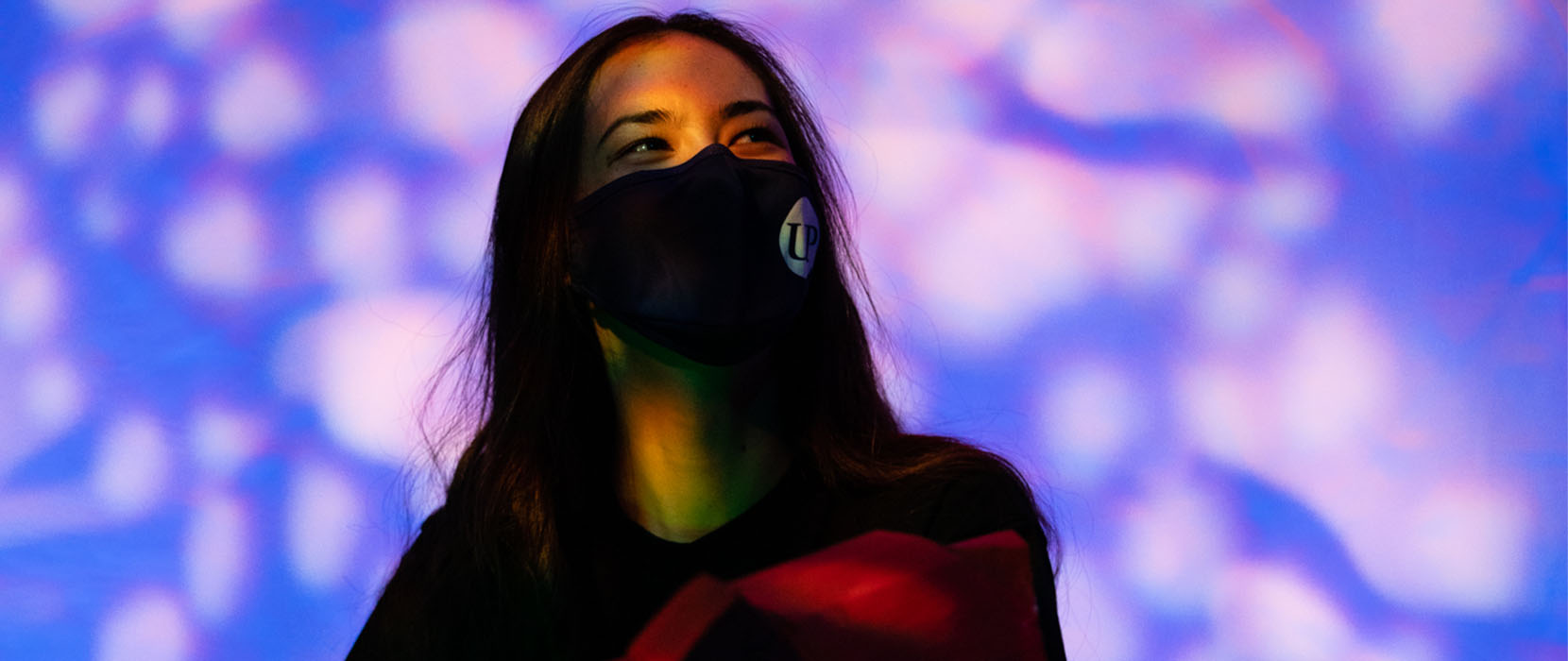
In addition to the materials, Kat has a personal connection to The Imugi Myth story. “Because I’m Korean American, I get to experience through research some things I missed out on in my childhood, the imugi story being one of those things,” she says. It also reframed the way she thought about her father and family interactions. “My mother is very vocally expressive,” she explains, “but my father acknowledges me in nonverbal ways.” A quiet nod, a gleam of pride in his eyes, these powerful but subtle gestures illuminated more complex elements and possibilities for storytelling.
As she worked on this project, she reflected on her own family, revisiting memories. They are a close family; she last saw them over winter break, and whenever she’s home in Sacramento, she goes to see her Korean grandparents once a week. “When I’m away from them, I miss the sounds, the smells, the food,” she says. That longing for the sensory aspects of family and home was woven into her production through lighting, music, and dance.
Yo took this inspiration to The Imugi Myth. “I’d like to bring a different perspective of what theater can be, both through materials, and introducing Korean culture to the University of Portland stage,” she says. Beyond the materials, the story is told entirely through lighting, rhythm, and movement, with no dialogue—a convention of certain types of traditional Korean performances. The “voice” of the dragon comes from the haunting, eerie music of the saenghwang, a traditional Korean flute made of 17 bamboo pipes. With no dialogue to rely on, the production challenges the viewer to pay attention to more nuanced elements. Every detail is rich with meaning.
The Imugi Myth is a modern take on Korean folklore and theater. In the Korean myth, imugi (sometimes spelled “imoogi”) dragons are benevolent beings, bringers of rain, associated with water and agriculture. Yo’s production centers on a girl whose village is suffering from an endless drought. When she encounters an imugi, she helps the dragon gain its power, and in return the dragon brings the rain and the harvest. Yo’s concept won The Regional Award in Allied Arts for an unrealized show at the 2021 Kennedy Center American College Theater Festival Design Technology and Management Exposition.
The realities of the pandemic have challenged Yo and her production team. Instead of being performed in front of a live audience, The Imugi Myth is filmed. “Having an audience would have been an ideal situation,” she says. “People don’t always realize what an energy the audience is for the actors; there’s a connection you don’t get in film.” But she is leaning into film and editing, learning new skills, making herself more competitive for the job market, and embracing the cinematic aspects.
Sebastian Adams ’21 is the choreographer on Yo’s production team. Like Yo, he has a range of creative skills and offered his own unique perspective to The Imugi Myth. Classically trained in dance at the Conservatory of Luxembourg, Adams brought a modern twist to the traditional mythology. “We did a lot of cultural research,” says Adams. “I felt very motivated to do this piece justice as a Korean cultural heritage play.” Adams immersed himself in the foundational movements of Korean folk dance. “I wanted to know why the people were dancing,” he says. “I need that connection to the humanistic trait in us all.”
Korean farmers in rural villages historically danced in reverence to the dragon as a symbol of harvest, growth, and rejuvenation. Adams choreographed the dance to begin with these traditional horizontal, earthbound movements, reflecting hardship and connection to the earth. But as the play progresses, and the girl and the dragon work to save the village from drought, the gestures become vertical and reaching. “I played with movements and my background of jazz and ballet, and infused my own style to make a hybrid dance form specifically for The Imugi Myth.”
Indeed, the production is something entirely new. A hybrid of theater, animation, and cinema, of traditional and modern, Yo and her team explore the uncertainty and power of being in between. Stage director Amanda DeRego ’21, who took on the challenge of bringing all of these elements into a cohesive story, says, “I think too often the world wants us to choose just one thing, or be one thing. But for much of my life, I’ve asked ‘why?’” Yo, too, feels an affinity for working in this new and liminal space. “It mirrors the biracial aspect of my identity, the way I exist as a person,” she says.
Some of her professors and mentors have suggested that Yo should narrow her focus, find a specialty or niche. And while she understands the importance of a focus, she never wants to cut herself off from an opportunity. “My curiosity is exactly why I’ve done so many things,” she says. “I am someone who is very, very curious.” Her family has a personal twist on an old proverb: “Curiosity killed the Kat; satisfaction brought her back.”
“I am starting to lean towards a style and focus through having an attention specific to the environment. My materials, the story I’m telling, and the process are converging towards who I am, what I want to establish and change in the theater industry.” After graduation, Yo plans to take a gap year and has been accepted to graduate school at California Institute of the Arts for 2022. “Everything’s open,” she says. “It’s a little bit scary—but I want to make art. There’s just no way I can sit in a room with four white walls and not want to paint on them.”
KAREN BRIDGES is a marketing and communications coordinator and writer for University of Portland.